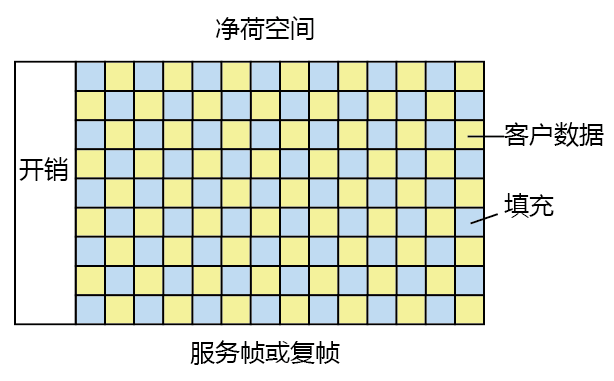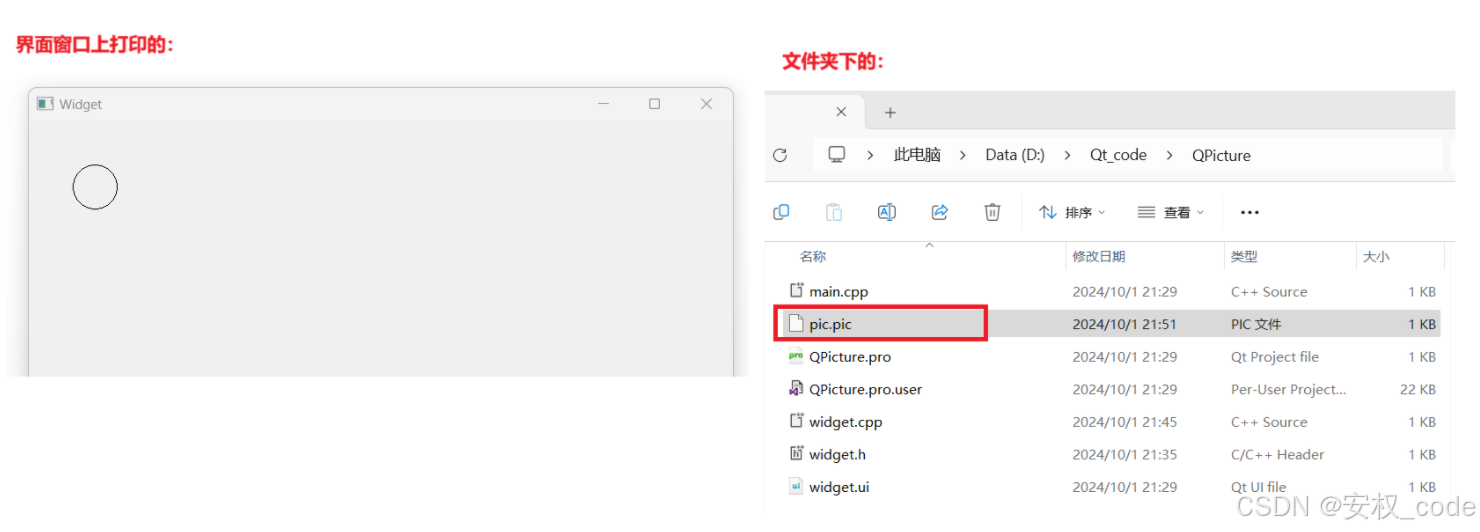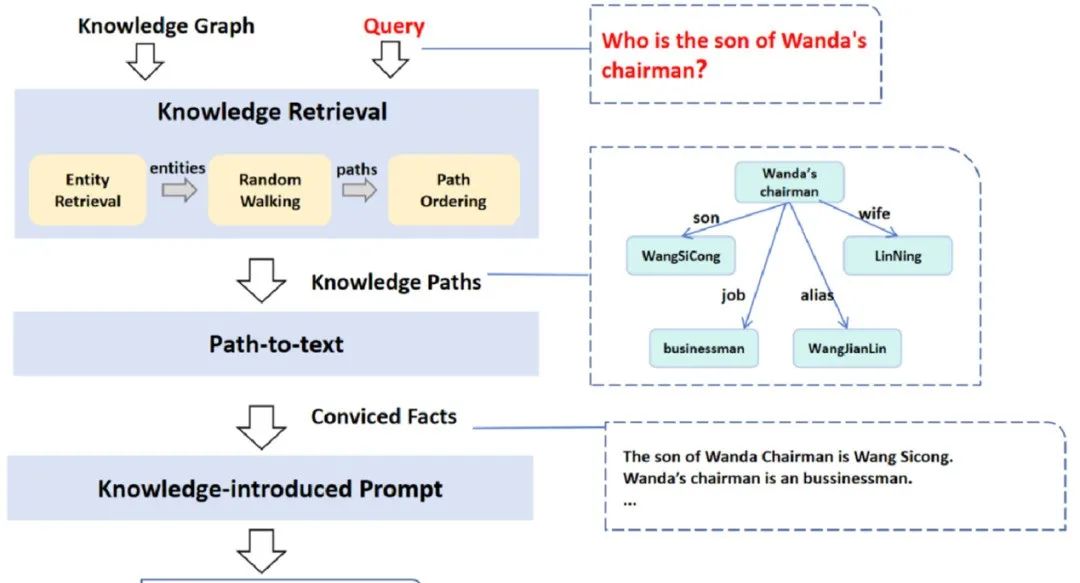片头
嗨喽~ 我们又见面啦,在上一篇C++之String类(上)中,我们对string类的函数有了一个初步的认识,这一篇中,我们将继续学习string类的相关知识。准备好了吗?咱们开始咯~

二、标准库中的string类
2.5 string类对象的修改操作
| 函数名称 | 功能说明 |
| push back | 在字符串后尾插字符c |
| append | 在字符串后追加一个字符串 |
| operator+= | 在字符串后追加字符串str |
| assign | 给字符串原有的内容进行覆盖,类似于赋值 |
| insert | 用于在字符串的pos位置插入一个字符串、字符串的前n个字符或n个字符c |
| erase | 用于在字符串的pos位置删除len个字符 |
| replace | 替换源字符串中的字符 |
| c str | 返回c格式字符串 |
| rfind + npos | 从字符串pos位置开始往前找字符c,返回该字符在字符串中的位置 |
| find | 从字符串pos位置开始往后找字符c,返回该字符在字符串中的位置 |
| substr | 在str中从pos位置开始,截取n个字符,然后将其返回 |
| swap | 用于交换2个string类对象 |
| operator+ | 返回一个新构造的string类对象,其值是lhs和rhs的合并 |
| getline | 用于字符串的输入 |
(1)push back函数

我们测试一下:
void test_string15() {
string s1("hello world");
cout << s1 << endl;
//在s1字符串的后面尾插'x'
s1.push_back('x');
cout << s1 << endl;
}
(2)append函数
 我们测试一下:
我们测试一下:
void test_string16() {
string s1("hello world");
cout << s1 << endl;
//在s1字符串的后面追加一个字符串
s1.append(" yyyyyy!!!!");
cout << s1 << endl;
}
(3)此外,我们还可以使用运算符operator+=函数重载
代码如下:
void test_string17() {
string s1("hello world");
cout << s1 << endl;
string s2("111111");
//在s1字符串的后面追加一个字符串
s1 += 'y';
s1 += "zzzzzzzzzzz";
s1 += s2;
cout << s1 << endl;
}
注意:
①在string尾部追加字符时,s.push_back(c)/s.append(1,c)/s += 'c' 三种的实现方式差不多,一般情况下,string类的+=操作用的比较多,+=操作不仅可以连接单个字符,还可以连接字符串
②对string操作时,如果能够大概预估到放多少字符,可以先通过reverse把空间预留好
(4)assign函数

assign函数类似于给字符串原有的内容进行覆盖,类似于赋值
void test_string18() {
string s1("hello world");
cout << s1 << endl;
s1.assign("11111");
cout << s1 << endl;
} 
(5)insert函数

①在s1字符串前头插"xxxxx"
void test_string19() {
string s1("hello world");
cout << s1 << endl;
//在s1字符串前头插"xxxxx"
s1.insert(0, "xxxxx");
cout << s1 << endl;
}
②在s1字符串前头插一个字符'y'
void test_string20() {
string s1("hello world");
cout << s1 << endl;
//在s1字符串前头插单个字符'y'
s1.insert(0, 1,'y');
cout << s1 << endl;
}
③使用迭代器,在s1字符串钱头插单个字符'y'
void test_string21() {
string s1("hello world");
cout << s1 << endl;
//在s1字符串前头插单个字符'y'
s1.insert(s1.begin(), 'y');
cout << s1 << endl;
}
④在s1字符串前插入s2字符串,二者都采用迭代器的形式
void test_string22() {
string s1("hello world");
cout << s1 << endl;
string s2("11111");
//在s1字符串前头插s2字符串
s1.insert(s1.begin(),s2.begin(),s2.end());
cout << s1 << endl;
}
(6)erase函数

①当pos=0,len=1,说明,从下标为0的元素开始,删除1个字符
void test_string23() {
string s1("hello world");
cout << s1 << endl;
//从下标为0的元素开始,删除1个字符
s1.erase(0, 1);
cout << s1 << endl;
} 
②当我不传第二个参数的时候,len默认为npos
void test_string24() {
string s1("hello world");
cout << s1 << endl;
//省略第二个参数
//默认删除从下标为4后的所有元素
//包括下标为4的元素
s1.erase(4);
cout << s1 << endl;
}
③当我传入的第二个参数len大于字符串本身的长度时
void test_string25() {
string s1("hello world");
cout << s1 << endl;
//从下标为3的位置开始,
//删除100个元素
s1.erase(3, 100);
cout << s1 << endl;
} 
另外,使用erase函数时,第二个参数len可以不合法,但是第一个参数pos必须合法!

(7)replace函数

哇哦,咋一看,这个函数怎么有这么多的用法?!
不慌,我们慢慢来看~
①string& replace(size_t pos,size_t len,const string& str);
void test_string27() {
string s1("hello world");
cout << s1 << endl;
//将下标为5的位置,1个字符
//替换为20%
s1.replace(5, 1, "20%");
cout << s1 << endl;
}
小练习:将下面字符串中出现的空白字符替换为"20%"
void test_string28() {
string s1("hello world hello bit");
cout << s1 << endl;
for (int i = 0; i < s1.size();) {
if (s1[i] == ' ') {
s1.replace(i, 1, "20%");
i += 3;
}
else {
i++;
}
}
cout << s1 << endl;
}
或者可以用另一种解法:
void test_string29() {
string s1("hello world hello bit");
cout << s1 << endl;
string s2;
//使用范围for
for (auto e : s1) {
if (e != ' ') {
s2 += e;
}
else {
s2 += "20%";
}
}
cout << s2 << endl;
}
(8) c_str函数
const char* c_str() const;
按照C语言的格式返回字符串
例如:
void test_string38() {
string s1("hello");
s1 += '\0';
s1 += "world";
cout << s1 << endl;
cout << s1.c_str() << endl;
} 在hello后面加上'\0'和字符串world,重载后的流插入操作符函数会按照size的大小来打印字符串
在hello后面加上'\0'和字符串world,重载后的流插入操作符函数会按照size的大小来打印字符串
而打印c_str的返回值,会遇到'\0'就停下
(9) rfind + npos函数
size_t rfind(char c,size_t pos = npos)const;
static const size_t npos = -1;
从字符串的pos位置向前找字符c,返回该字符在字符串中的位置
npos是string类中定义的一个静态成员变量,类型为无符号整型,值为-1,因为是无符号转换后变成整型的最大值,也就是4294967295(42亿多) ,当我们不给pos的值,按照缺省值执行,默认从字符串尾部开始寻找。
例如:
void test_string39() {
string s1("hello");
//从后往前寻找第一次出现的'l'
cout << s1.rfind('l') << endl;
} (10) find函数
(10) find函数
size_t find (char c,size_t pos = 0) const;
从字符串的pos位置向后找字符c,返回该字符在字符串中的位置
例如:
void test_string40() {
string s1("hello");
//从前往后寻找第一次出现的'e'
cout << s1.find('e') << endl;
} (11)substr函数
(11)substr函数
string substr (size_t pos = 0,size_t len = npos);
在str中从pos位置开始,截取len个字符,然后将其返回
例如:
void test_string41() {
string s1("hello world!");
//从下标为0的元素开始,截取5个字符
string s2 = s1.substr(0, 5);
cout << s2 << endl;
} (12) swap函数
(12) swap函数
void swap (string& str);
用于交换2个string类对象
string类中的swap函数相比标准库中的swap函数,交换string类对象的效率更高
例如:
void test_string42() {
string s1("hello");
string s2("world!");
//将s1字符串和s2字符串进行交换
s1.swap(s2);
cout << s1 << endl;
cout << s2 << endl;
}
(13) operator+ 函数
string operator+ (const string& lhs,const string& rhs);
string operator+ (const string& lhs,const char* rhs);
string operator+ (const char* lhs,const char* rhs);
string operator+ (const string& lhs,char rhs);
string operator+ (char lhs,const string& rhs);
返回一个新构造的string类对象,其值是lhs和rhs的合并
例如:
void test_string43() {
string s1("hello");
string s2("world!");
string s3;
s3 = s1 + s2;
cout << s3 << endl;
s3 = s1 + "123";
cout << s3 << endl;
s3 = "123" + s2;
cout << s3 << endl;
s3 = s1 + "x";
cout << s3 << endl;
s3 = 'x' + s1;
cout << s3 << endl;
}
(14)getline函数
istream& getline(istream& is,string& str,char delim);
istream& getline(istream& is,string& str);
用于字符串的输入
相比cin遇到空格就停止读取,我们可以给出分隔符delim,遇到delim才停止读取。如果没有给出,则遇到换行停止读取。
例如:
void test_string44() {
string s1;
//没有给出分隔符delim
//遇到换行,停止读取
getline(cin, s1);
cout << s1 << endl;
//给出分隔符'%'
//遇到分隔符,停止读取
getline(cin, s1, '%');
cout << s1 << endl;
} 
2.6 各种运算符重载函数
(1)operator>>和operator<<
istream& operator>>(istream& is,string& str);
ostream& operator<<(ostream& os,const string& str);
用于string对象的流提取和流插入
例如:
void test_string45() {
string s1;
cin >> s1;
cout << s1 << endl;
} 
(2)比较运算符
用于比较2个字符串的对应位置的ASCII码值大小
例如:
void test_string46() {
string s1("abcde");
string s2("bbcde");
cout << (s1 > s2) << endl;
cout << (s1 >= s2) << endl;
cout << (s1 < s2) << endl;
cout << (s1 <= s2) << endl;
cout << (s1 == s2) << endl;
cout << (s1 != s2) << endl;
}
刚刚我们学习了这么多的函数,一起来练练几道题吧~
小练习1:反转字符串

emmm,这道题是想表达什么意思呢?举2个例子吧~

OK,本题分析完成,具体代码如下:
class Solution {
public:
void reverseString(vector<char>& s) {
int begin = 0; //begin从下标为0的位置开始
int end = s.size()-1; //end从最后一个元素的下标开始
while(begin < end) //当begin和end相遇时,退出循环
{
//交换
int temp = s[begin];
s[begin] = s[end];
s[end] = temp;
begin++; //begin更新
end--; //end更新
}
}
};小练习2:仅仅反转字母

emmm,这道题和上面反转字符串很像,但是不太一样,因为这道题,字符串里面不仅有字母,还有其他符号。我们要做的,只是将字母反转,其他符号的位置不变。

第一步,我们首先要判断当前字符是否为字母还是其他符号:
//判断当前字符是否为字母
//注意:用短路或来连接
bool isLetter(char c)
{
return c >= 'A' && c <= 'Z'
|| c >= 'a' && c <= 'z';
}第二步,反转字母(定义begin和end,如果遇到字母,进行交换,否则直接跳过)
string reverseOnlyLetters(string s) {
int begin = 0; //begin指向第一个元素的位置
int end = s.size()-1; //end指向最后一个元素的位置
while(begin < end) //当begin和end相遇时,退出循环
{
//当前字符不是字母,直接跳过,不需要反转
while(begin < end && !isLetter(s[begin]))
{
begin++;
}
while(begin < end && !isLetter(s[end])){
end--;
}
//当前字符为字母,需要反转,进行交换
int temp = s[begin];
s[begin] = s[end];
s[end] = temp;
//交换完毕后,begin更新,end也更新
begin++;
end--;
}
return s; //最后返回s字符串
}小练习3:字符串中的第一个唯一字符

emmm,举个例子呗~

另外,这道题特别说明了:1<=s.length<=10^5,s只包括小写字母
第一步,我们需要给26个小写字母开辟数组,数组的类型为int(开辟空间足够大)
//给26个小写字母开辟空间,初始化为0
int count[26] = {0};第二步,我们需要统计字符串中的每个字符出现的次数
//利用范围for,统计字符串中的每个字符出现的次数
//这里的count数组里面的元素是按照顺序的
//比如:下标为0是'a',下标为1是'b',下标为2是'c'
for(auto e: s){
count[e-'a']++;
}第三步:遍历s字符串,找出第一次出现唯一字符
//遍历s字符串,找出第一次出现的唯一字符
//如果找到了,立即返回下标
for(int i = 0;i<s.size();i++){
if(count[s[i]-'a'] == 1){
return i;
}
}
//如果没有找到,返回-1
return -1;OK,本题完整代码如下:
class Solution {
public:
int firstUniqChar(string s) {
//给26个小写字母开辟空间,初始化为0
int count[26] = {0};
//利用范围for,统计字符串中的每个字符出现的次数
//这里的count数组里面的元素是按照顺序的
//比如:下标为0是'a',下标为1是'b',下标为2是'c'
for(auto e: s){
count[e-'a']++;
}
//遍历s字符串,找出第一次出现的唯一字符
//如果找到了,立即返回下标
for(int i = 0;i<s.size();i++){
if(count[s[i]-'a'] == 1){
return i;
}
}
//如果没有找到,返回-1
return -1;
}
};方法二:直接将字符串放入另一个数组中,统计字符串中的第一个唯一字符
class Solution {
public:
int firstUniqChar(string s) {
//开辟数组,初始化为0
int count[256] = {0};
//将s字符串里面的每一个元素都放入数组
//相同的字符,每放入1次,该下标对应的值自增1次
for(int i = 0; i<s.size();i++){
count[s[i]]++;
}
//遍历s字符串,找出第一次出现的唯一字符
for(int i = 0;i<s.size();i++){
if(count[s[i]] == 1){
return i;
}
}
return -1;
}
};小练习4:验证回文串

emmm,举个例子吧~

第一步:判断是否为字母数字字符
//1.判断是否为字母数字字符
bool isLetterOrNumber(char c){
return c >= '0' && c <= '9'
|| c >= 'a' && c <= 'z'
|| c >= 'A' && c <= 'Z';
}第二步:将所有的大写字母转换为小写字母(使用范围for时,必须传引用,这样才能保证修改e的同时,修改源字符串)
//1.大写字符转换为小写字符
for(auto& e:s){
if(e >= 'A' && e<= 'Z'){
e += 32;
}
}第三步:验证是否为回文串
//2.验证是否为回文串
int begin = 0; //begin指向第一个元素
int end = s.size()-1; //end指向最后一个元素
while(begin < end) //当begin和end相遇时,循环停止
{
//遇到非字母数字字符时,直接跳过
while(begin < end && !isLetterOrNumber(s[begin])){
begin++;
}
while(begin < end && !isLetterOrNumber(s[end])){
end--;
}
//2个字母数字字符进行比较
//如果不相同,返回false
//如果相同,begin++,end--
if(s[begin] != s[end]){
return false;
}else{
begin++;
end--;
}
}
//比较完毕,begin和end指向的元素都相同,返回true
return true;OK,本题完整代码如下:
class Solution {
public:
//1.判断是否为字母数字字符
bool isLetterOrNumber(char c){
return c >= '0' && c <= '9'
|| c >= 'a' && c <= 'z'
|| c >= 'A' && c <= 'Z';
}
bool isPalindrome(string s) {
//1.大写字符转换为小写字符
for(auto& e:s){
if(e >= 'A' && e<= 'Z'){
e += 32;
}
}
//2.验证是否为回文串
int begin = 0; //begin指向第一个元素
int end = s.size()-1; //end指向最后一个元素
while(begin < end) //当begin和end相遇时,循环停止
{
//遇到非字母数字字符时,直接跳过
while(begin < end && !isLetterOrNumber(s[begin])){
begin++;
}
while(begin < end && !isLetterOrNumber(s[end])){
end--;
}
//2个字母数字字符进行比较
//如果不相同,返回false
//如果相同,begin++,end--
if(s[begin] != s[end]){
return false;
}else{
begin++;
end--;
}
}
//比较完毕,begin和end指向的元素都相同,返回true
return true;
}
};小练习5:字符串相加

emmm,举个例子吧~

面对这种题,该怎么做呢?
题目要求:不能使用任何内建的用于处理大整数的库,也不能直接将输入的字符串转换为整数形式
那我们可以把字符串拆成个位,十位,百位......然后将个位和个位相加,十位和十位相加,百位和百位相加
第一步:我们先将num1和num2字符串的最后一个元素取出来,保存到end1和end2
int end1 = num1.size()-1;//end1保存的是num1字符串的最后一位(个位)
int end2 = num2.size()-1;//end2保存的是num2字符串的最后一位(个位)第二步:假设变量next表示进位,字符串s表示累加的最终结果。我们将num1和num2的个位数由字符转换为数字,进行相加,注意要处理进位的情况。
int next = 0; //进位
string s; //返回的最终结果
//当end1和end2都不存在时,退出循环,用短路或来连接
while(end1 >= 0 || end2 >= 0)
{
int x1 = end1 >= 0 ? num1[end1--]-'0' : 0;//x1表示把当前字符转换为数字
int x2 = end2 >= 0 ? num2[end2--]-'0' : 0;//x2表示把当前字符转换为数字
int x = x1+x2+next;//x表示2个位数进行累加的结果
next = x/10; //进位
x = x % 10; //对应位上的数
s.insert(0,1,'0'+x);//头插,将数字转换为字符
//s.insert(s.begin(),'0'+x);//使用迭代器
}
if(next == 1) //当进位为1,直接在字符串s的前面头插"1"
{
s.insert(0,1,'1');
// s.insert(s.begin(),'0'+x);//使用迭代器
}
return s; //返回s字符串OK,这道题我们解决了,完整代码如下:
class Solution {
public:
string addStrings(string num1, string num2) {
int end1 = num1.size()-1;//end1保存的是num1字符串的最后一位(个位)
int end2 = num2.size()-1;//end2保存的是num2字符串的最后一位(个位)
int next = 0; //进位
string s; //返回的最终结果
//当end1和end2都不存在时,退出循环,用短路或来连接
while(end1 >= 0 || end2 >= 0){
int x1 = end1 >= 0 ? num1[end1--]-'0' : 0;//x1表示把当前字符转换为数字
int x2 = end2 >= 0 ? num2[end2--]-'0' : 0;//x2表示把当前字符转换为数字
int x = x1+x2+next;//x表示2个位数进行累加的结果
next = x/10; //进位
x = x % 10; //对应位上的数
s.insert(0,1,'0'+x);//头插,将数字转换为字符
//s.insert(s.begin(),'0'+x);//使用迭代器
}
if(next == 1) //当进位为1,直接在字符串s的前面头插"1"
{
s.insert(0,1,'1');
// s.insert(s.begin(),'0'+x);//使用迭代器
}
return s; //返回s字符串
}
};不过,每次插入要挪动数据,插入N次,挪动次数合计是等差数列。头插的时间复杂度为O(n^2),我们可以选择尾插,最后逆置。

片尾
今天我们把string类的函数掌握的差不多了,又练习了几道题,希望对大家有所帮助!!!
求点赞收藏加关注!!!
谢谢大家!!!




















